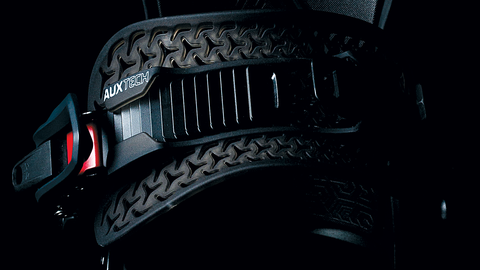What to choose when you wanna step up the power

The boundaries between styles of snowboarding get more blurred every year. From park to pow, riders like Stale Sandbech can get creative on every kind of terrain, and the equipment they use is accordingly pretty versatile. But if there’s one word that still sums up the essence of ‘freeriding’ it is speed.
Speed means rapid edge transitions. It means blasting through the backcountry, layout out euro carves on fresh corduroy or just ripping down the bumpy home run with your buddies, tears streaming behind your goggles.
If you like going fast – like, really fast – then you need a pair of bindings that’s geared towards freeriding.
What makes a good freeride snowboard binding?
The key priorities of any freeride binding are response and support. This is primarily derived from the flex pattern. Stiffer bindings such as the Black Label and the all-new Cleaver blend carbon into the baseplate and beef up the highback with either more carbon or a Nylon/Polyone composite.
The result is a super strong, rigid platform that transmits energy straight through to the edges. If the rider inputs a movement, the board will respond immediately.
As the speed dial shifts further to the right, the forces you’re submitted to become greater. Absorbing a landing or slamming on the anchors when you’re traveling at 50 mph puts a lot of strain through your set-up (and your legs) and a stiff binding will give you extra support. Soft bindings, by contrast, are easy to control at slower speeds – making them great for learning or jibbing around in the park – but they can buckle under pressure.
What other features should you look for?
Assuming your baseplate and highback are suitable for freeriding, the next element to check out is the straps. As we explained in our deep dive on choosing snowboard bindings these need to wrap your boot securely and feel comfortable – an even more important consideration when you’re riding aggressively.

Look for an ankle strap that’s wide and ergonomic. This will spread the pressure more evenly across your foot. Our Aux Tech straps – found on the Black Label, the Cleaver and the Katana – deploy a geometric mesh that expands as you crank the ratchets down, gripping the boot and eliminating pressure points. They’re also super tough, which is reassuring if you’re gonna be dropping into critical faces and generally putting them through the ringer.
A comfy footbed and padding inside the highback and under the baseplate will reduce vibrations when you’re making the jump to lightspeed. Rome’s freeride-focused bindings include a Duracush sub base, which actually reacts to impact like suspension.

Finally, a good freeride binding should be adjustable. That starts with the baseplate and heel hoop, which need to fit your boot perfectly in order to transmit power into the board efficiently. Once that’s done, set the forward lean on the highback according to your preference; freeriders might appreciate the quicker response you get when you increase the forward lean. Rome highbacks can also be tilted from side to side in order to better align with your heel edge, improving carving performance. Last up, our unique Pivotmount system lets you fine-tune the way your ankle strap sits over your boot – set it lower and it’ll feel loose and surfy; move it higher and your heel will be fully locked back for maximum control.
![]()
For step-by-step instructions on all these adjustments, check out our guide to setting-up your snowboard bindings.
Bottom line – what are the best freeride snowboard bindings?
- Get a wider strap that spreads any pressure and holds your boot securely
- High quality padding will help dampen vibrations
- Fully adjustable highbacks and straps mean you can tune your set-up towards aggressive freeriding or surfier turns
